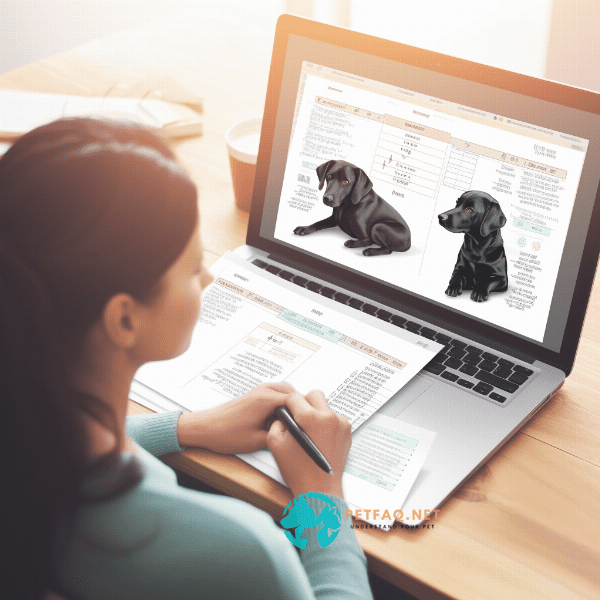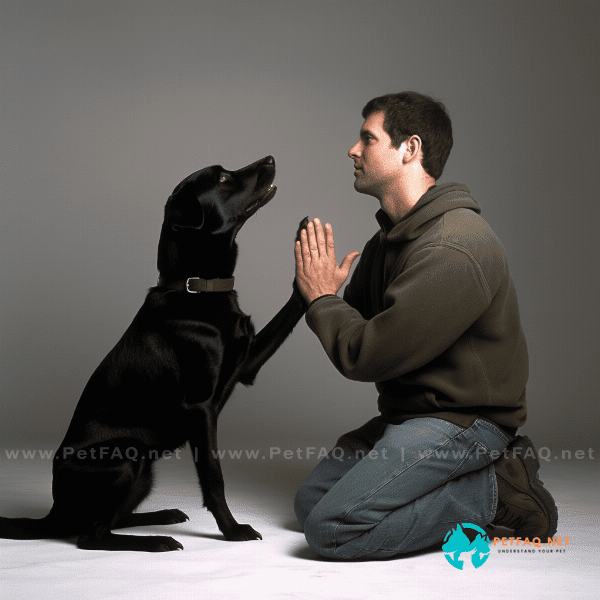Table of Contents
- Why Crate Training Can Benefit Your Dog
- Choosing the Right Crate for Your Dog
- Introducing Your Dog to the Crate
- Creating a Positive Association with the Crate
- Setting a Crate Training Schedule
- Using Crate Training for Housebreaking
- Avoiding Common Crate Training Mistakes
- Gradually Extending Crate Time
- Making the Crate a Safe and Comfortable Space
- Enjoying the Benefits of a Crate-Trained Dog
Why Crate Training Can Benefit Your Dog
Crate training a dog is an effective way to provide a comfortable and safe space for your furry friend while also providing a host of benefits. Here are some reasons why crate training can be beneficial for your dog:
Provides a Safe Space
Dogs are natural den animals and often seek out small, enclosed spaces for comfort and security. A crate provides a safe and cozy space for your dog to relax in, where they can feel secure and protected. By providing a comfortable and familiar space for your dog, you can help reduce anxiety and stress levels.
Aids in Separation Anxiety
Dogs who suffer from separation anxiety can often become destructive when left alone. Crate training can help ease separation anxiety by providing a sense of security and comfort. By Training your dog to associate the crate with positive experiences, such as treats, toys, and praise, you can help alleviate their anxiety and ensure they remain calm and relaxed while you are away.
Facilitates Traveling with Your Dog
If you enjoy traveling with your dog, crate training can be a useful tool. By providing your dog with a familiar and comfortable space, they can feel more secure and less anxious in new environments. Additionally, many airlines and hotels require dogs to be crate-trained for travel, making it an essential skill for frequent travelers.
Provides a Space for Recovery
In the unfortunate event that your dog becomes ill or injured, crate training can provide a safe and comfortable space for them to recover. A Crate can prevent your dog from further injuring themselves or aggravating an injury by limiting their movement. Additionally, the familiarity and comfort of their crate can help reduce stress levels and promote healing.
In summary, crate Training a dog can provide numerous benefits for both you and your furry friend. By providing a safe and comfortable space for your dog, you can reduce anxiety, aid in housebreaking and separation anxiety, facilitate travel, and provide a space for recovery.
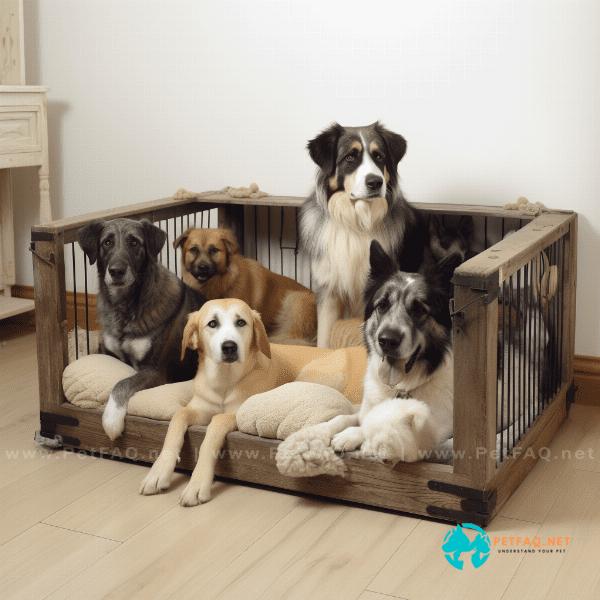
Choosing the Right Crate for Your Dog
Choosing the right crate for your dog is an important step in the crate training process. The crate should be comfortable, safe, and appropriate for your dog’s size and breed. Here are some things to consider when choosing a crate for your dog:
Size and Breed
The crate you choose should be large enough for your dog to stand up, turn around, and lie down comfortably. At the same time, it should not be too big as this may encourage your dog to use one end as a bathroom. Consider the breed of your dog when choosing a crate, as some breeds may require more space than others.
Material and Durability
The material of the crate should be sturdy and durable, especially if you have a strong or energetic dog. Wire crates are a popular choice as they are lightweight, easy to clean, and allow for good air circulation. Plastic crates can be a good option for travel as they are more portable and provide more insulation.
Design and Safety
When choosing a crate, make sure that it is designed with safety in mind. The crate should have secure latches and locks to prevent your dog from escaping. Additionally, the corners and edges of the crate should be smooth and free from any sharp edges that could harm your dog.
Location and Use
Consider where you will be using the crate and for what purposes. If the crate will be used for housebreaking, it should be located in an area that is easily accessible and close to where you spend most of your time. If the crate will be used for travel, look for a crate that is lightweight and portable.
Cost
The cost of a crate can vary greatly depending on the size, material, and design. While it may be tempting to choose a cheaper option, investing in a high-quality crate can save you money in the long run by avoiding the need to replace a broken or inadequate crate.
By considering these factors when choosing a crate for your dog, you can ensure that you are providing a safe and comfortable space for your furry friend to call their own. A well-chosen crate will help facilitate the crate training process and create a positive association between your dog and their crate.
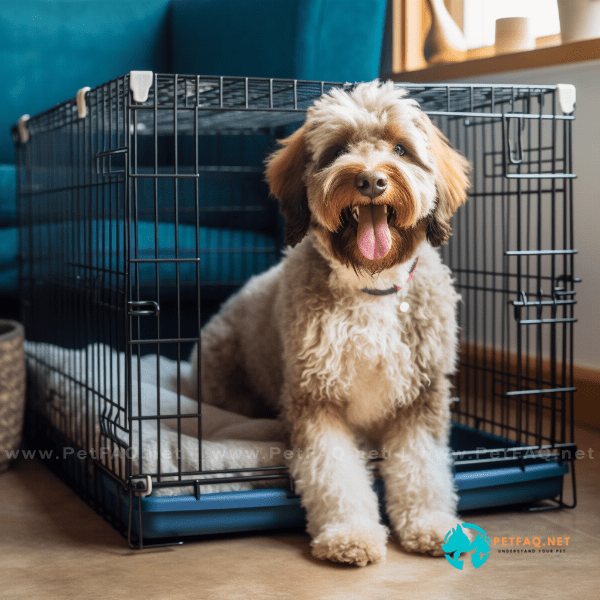
Introducing Your Dog to the Crate
Introducing your dog to the crate is an important step in the crate training process. It’s important to make the crate a comfortable and positive place for your dog, rather than a source of anxiety or stress. Here are some tips for introducing your dog to the crate:
Step-by-Step Approach
Introduce your dog to the crate gradually, starting with short periods of time and gradually increasing the duration. Place some treats or toys inside the crate to encourage your dog to enter the space. Do not force your dog to enter the crate, instead, allow them to explore the space on their own terms.
Positive Association
Make sure to create a positive association between your dog and their crate. Use treats and praise to encourage your dog to enter the crate, and make sure to provide plenty of positive reinforcement when they do. Avoid using the crate as a punishment or negative reinforcement.
Feeding in the Crate
Feeding your dog in the crate can help create a positive association with the space. Place your dog’s food bowl inside the crate, and allow them to eat their meals in the crate. This will help your dog associate the crate with a positive experience.
Gradual Isolation
Once your dog is comfortable entering the crate, gradually start to close the door for short periods of time while you are present. Gradually increase the duration of time with the door closed, and eventually start to leave the room while your dog is in the crate. This will help your dog become accustomed to being alone in the crate without experiencing anxiety or stress.
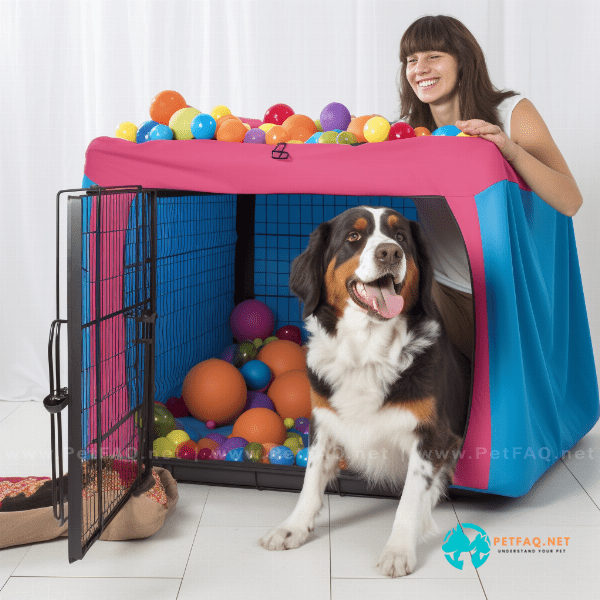
Creating a Positive Association with the Crate
Creating a positive association with the crate is essential for successful crate training. By making the crate a comfortable and positive space, your dog will be more likely to use it willingly and happily. Here are some tips for creating a positive association with the crate:
Treats and Rewards
Use treats and rewards to encourage your dog to enter and stay in the crate. Provide treats and toys inside the crate, and give your dog praise and attention when they enter the space. This will help your dog associate the crate with positive experiences and reinforce the idea that the crate is a safe and happy place.
Using the Crate for Positive Activities
Encourage your dog to use the crate for positive activities, such as sleeping or playing with toys. By making the crate a part of your dog’s routine, they will be more likely to use it willingly and happily. Avoid using the crate for negative activities, such as punishment or isolation.
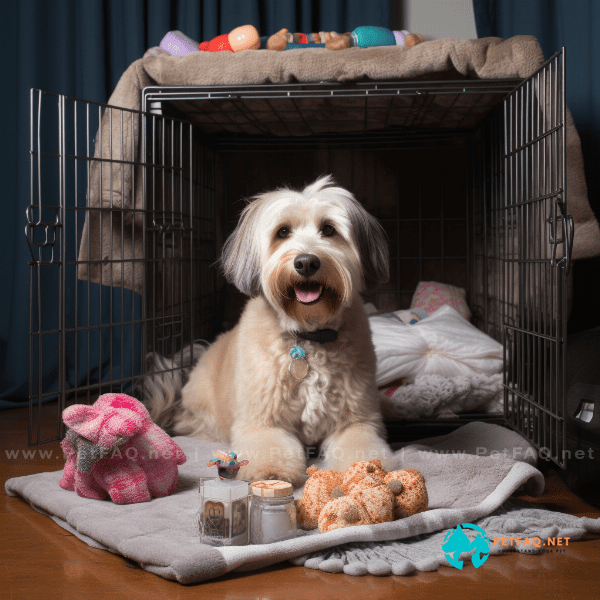
Setting a Crate Training Schedule
Setting a crate training schedule is an important part of the crate training process. A consistent schedule will help your dog become accustomed to the crate and understand when it’s time to enter and exit the space. Here are some tips for setting a crate training schedule:
Consistent Timing
Set a consistent schedule for crate training, including when your dog will enter and exit the crate. This will help your dog understand when it’s time to go into the crate, and when they can expect to be let out. Consistency is key to successful crate training.
Routine Activities
Incorporate the crate into your dog’s routine activities, such as meals, playtime, and bedtime. This will help your dog become accustomed to the crate as a normal part of their routine, and avoid associating the crate with negative experiences.
Be Flexible
Be flexible with your crate training schedule, and adjust it as needed to suit your dog’s needs. If your dog is struggling with crate training, it may be necessary to slow down or adjust the schedule to better suit their individual needs.

Using Crate Training for Housebreaking
Consistent Schedule
Set a consistent schedule for when your dog will be taken out of the crate for potty breaks. This will help your dog understand when it’s time to go outside and reduce the likelihood of accidents in the house.
Short Periods of Time
Start with short periods of time in the crate, gradually increasing the duration as your dog becomes more comfortable with the space. Take your dog outside for potty breaks immediately after being let out of the crate.
Positive Reinforcement
Use positive reinforcement to encourage your dog to go potty outside. Provide plenty of praise and treats when your dog goes potty outside, and avoid punishing or scolding your dog for accidents in the house.
Monitoring Your Dog’s Behavior
Pay attention to your dog’s behavior and signs that they need to go outside. This can include sniffing, circling, or whining. Take your dog outside immediately if you notice any of these behaviors.
Avoiding Accidents in the Crate
Avoid leaving your dog in the crate for too long, as this can lead to accidents inside the crate. Make sure to take your dog outside for potty breaks frequently, especially after meals, playtime, or naps.
By using crate training for housebreaking, you can help teach your dog to control their bladder and bowels and reduce the number of accidents in the house. Remember to be patient and consistent, and to use plenty of positive reinforcement to encourage good behavior.
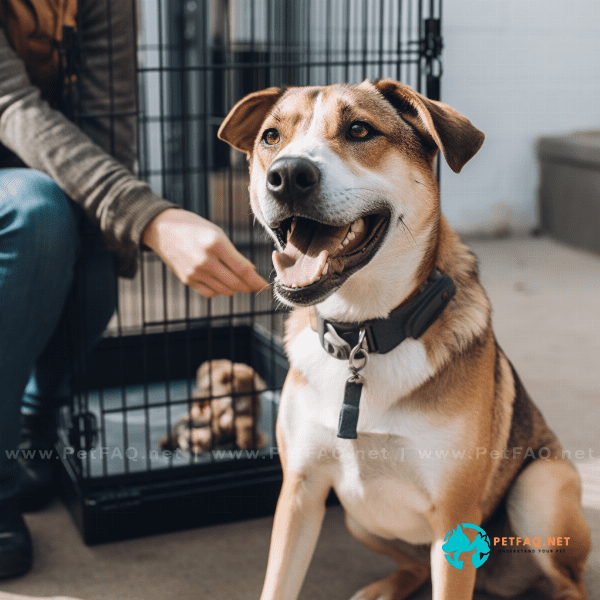
Avoiding Common Crate Training Mistakes
Crate training can be a highly effective tool for dog training, but it’s important to avoid common mistakes that can hinder the process. Here are some common mistakes to avoid when crate training your dog:
Using the Crate as Punishment
Using the crate as a form of punishment can create a negative association with the space, and make your dog less likely to use it willingly. Avoid using the crate as punishment, and instead use positive reinforcement to encourage your dog to enter and stay in the space.
Leaving Your Dog in the Crate for Too Long
Leaving your dog in the crate for extended periods of time can lead to anxiety and stress, and can even lead to accidents inside the crate. Make sure to take your dog outside for potty breaks frequently, and avoid leaving them in the crate for more than a few hours at a time.
Choosing the Wrong Size Crate
Choosing a crate that is too small or too large can hinder the crate training process. Make sure to choose a crate that is appropriate for your dog’s size and breed, and that allows them to stand up, turn around, and lie down comfortably.
Rushing the Process
Rushing the crate training process can lead to anxiety and stress for your dog, and can even result in a negative association with the crate. Take the process at your dog’s pace, gradually increasing the duration of time they spend in the crate.
Not Creating a Positive Association with the Crate
Creating a positive association with the crate is essential for successful crate training. Use positive reinforcement to encourage your dog to enter and stay in the crate, and make sure to provide a comfortable and cozy space for your dog to lie down.
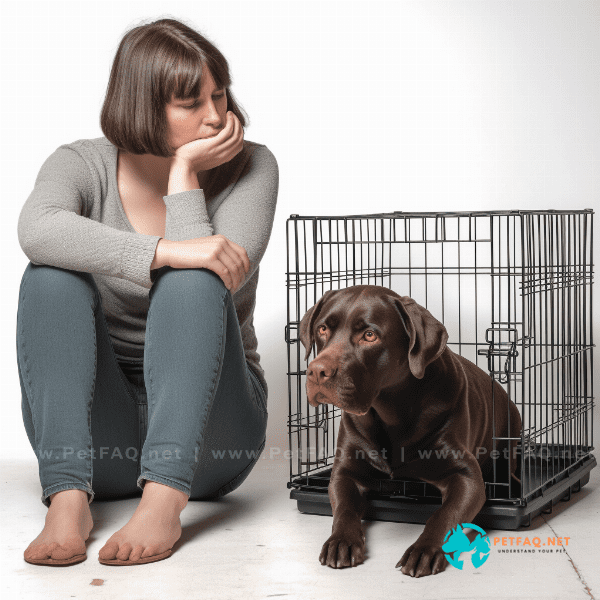
Gradually Extending Crate Time
Start Small
Start with short periods of time in the crate, gradually increasing the duration as your dog becomes more comfortable with the space. This will help your dog become accustomed to the crate at their own pace, and avoid overwhelming them with too much time in the crate too soon.
Provide Distractions
Provide toys and treats inside the crate to help distract your dog and make the time spent in the crate more enjoyable. This will help create a positive association with the space and make your dog more likely to use it willingly.
Be Present
Stay close to the crate while your dog is inside, especially in the beginning stages of crate training. This will help your dog feel more comfortable and reduce the likelihood of anxiety or stress.
Gradually Increase Duration
Gradually increase the amount of time your dog spends in the crate, starting with short periods of time and gradually increasing the duration. This will help your dog become comfortable with being alone in the crate, without experiencing anxiety or stress.
Provide Comfort
Provide comfortable bedding and blankets inside the crate, and make sure the space is well-ventilated and not too hot or cold. By providing a comfortable and safe space for your dog, you can help reduce anxiety and promote relaxation.
Take Breaks
Take breaks from crate training as needed, and adjust the schedule to suit your dog’s individual needs. Remember to be patient and flexible, and to take the process at your dog’s pace to ensure a positive and successful experience.
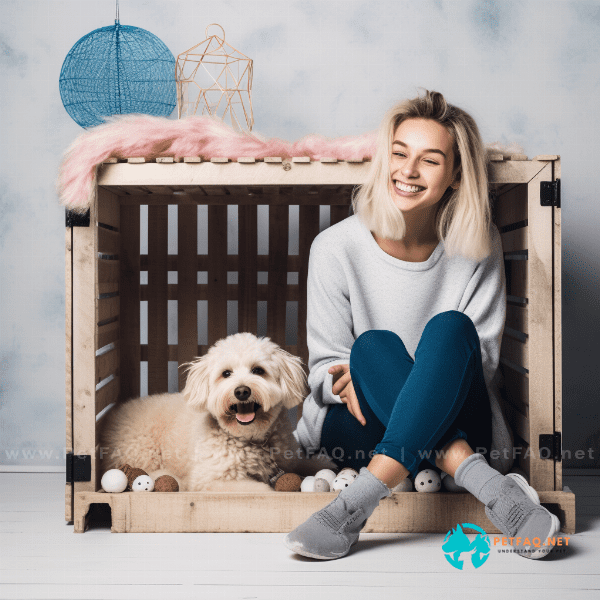
Making the Crate a Safe and Comfortable Space
Making the crate a safe and comfortable space for your dog is essential for successful crate training. By providing a comfortable and positive environment, your dog will be more likely to use the crate willingly and happily. Here are some tips for making the crate a safe and comfortable space:
Choose the Right Location
Choose a quiet and peaceful location for the crate, away from high traffic areas and loud noises. This will help your dog feel safe and secure in their new space, and reduce the likelihood of anxiety or stress.
Provide Comfortable Bedding
Provide soft and comfortable bedding inside the crate, such as a blanket or dog bed. This will help create a cozy and inviting space for your dog to lie down, and make the crate a more comfortable place to be.
Add Familiar Scents
Add familiar scents to the crate, such as a piece of clothing or a favorite toy. This will help make the crate feel more familiar and comforting to your dog, and make them more likely to use it willingly.
Keep it Clean
Keep the crate clean and tidy, and remove any soiled bedding or toys immediately. This will help create a hygienic and safe space for your dog, and reduce the likelihood of accidents or illness.
Use Positive Reinforcement
Use positive reinforcement to encourage your dog to use the crate willingly. Provide plenty of praise and attention when your dog enters the crate, and avoid using the crate as a form of punishment or negative reinforcement.
Provide Water and Toys
Provide access to water and toys inside the crate, especially if your dog will be spending extended periods of time in the space. This will help keep your dog comfortable and entertained, and make the crate a more inviting place to be.
By making the crate a safe and comfortable space, you can help ensure a positive and successful crate training experience for your dog. Remember to use positive reinforcement and take the process at your dog’s pace to ensure a successful transition to crate training.
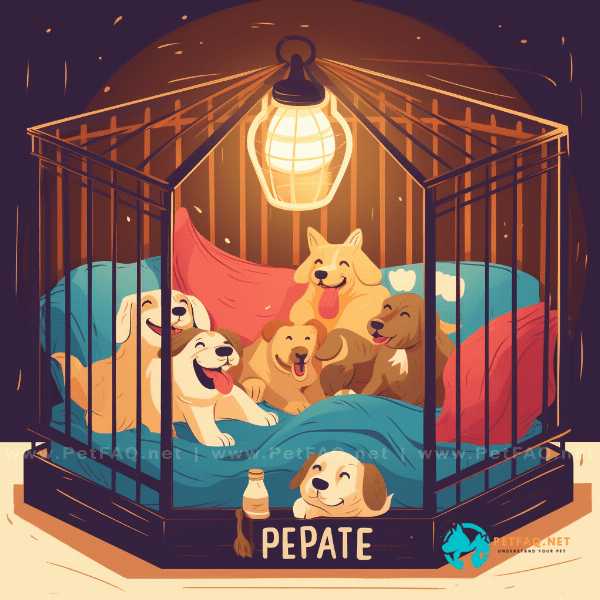
Enjoying the Benefits of a Crate-Trained Dog
Crate training can offer many benefits for both you and your furry friend. By crate training your dog, you can help promote good behavior, reduce anxiety and stress, and provide a safe and comfortable space for your dog to rest and relax. Here are some of the benefits of a crate-trained dog:
Promotes Good Behavior
Crate training can help promote good behavior in your dog by providing a designated space for rest and relaxation. This can help reduce destructive behavior and encourage positive behavior, such as obedience and housebreaking.
Reduces Anxiety and Stress
Crate training can help reduce anxiety and stress in your dog by providing a safe and comfortable space to retreat to when feeling overwhelmed or anxious. This can be especially helpful for dogs with separation anxiety or other anxiety-related issues.
Provides a Safe and Comfortable Space
Crate training provides a safe and comfortable space for your dog to rest and relax. By providing a cozy and inviting space, you can help encourage your dog to use the crate willingly and happily.
Makes Travel Easier
Crate training can make travel easier by providing a familiar and comfortable space for your dog to rest during car trips or plane rides. This can reduce anxiety and stress during travel and make the experience more enjoyable for both you and your furry friend.
Helps with Housebreaking
Crate training can be an effective tool for housebreaking your dog. By using the crate as a training tool, you can help teach your dog to control their bladder and bowels, and reduce the number of accidents in the house.
By enjoying the benefits of a crate-trained dog, you can help promote good behavior, reduce anxiety and stress, and provide a safe and comfortable space for your furry friend. Remember to use positive reinforcement and to take the process at your dog’s pace to ensure a successful transition to crate training.
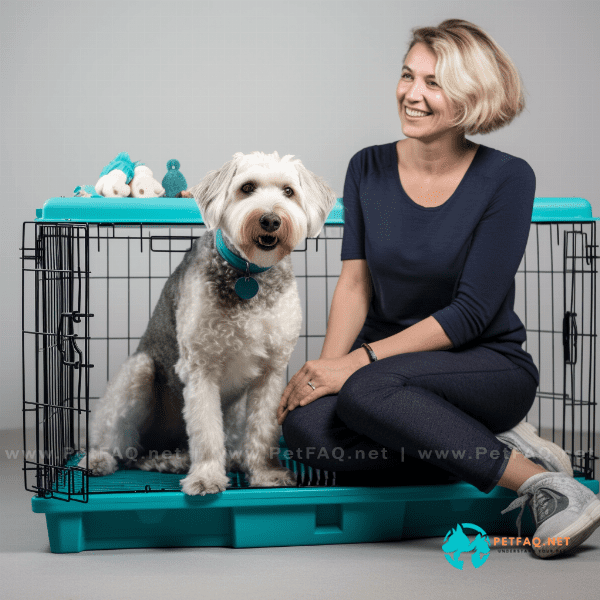
Frequently Asked Questions (FAQs) about Crate training a dog:
1. Can crate training be used to help with separation anxiety in dogs?2. How do I crate train an older dog?
3. How do I introduce my dog to the crate?
4. What are some common mistakes to avoid when crate training a dog?
5. How do I make the crate a comfortable and inviting space for my dog?

